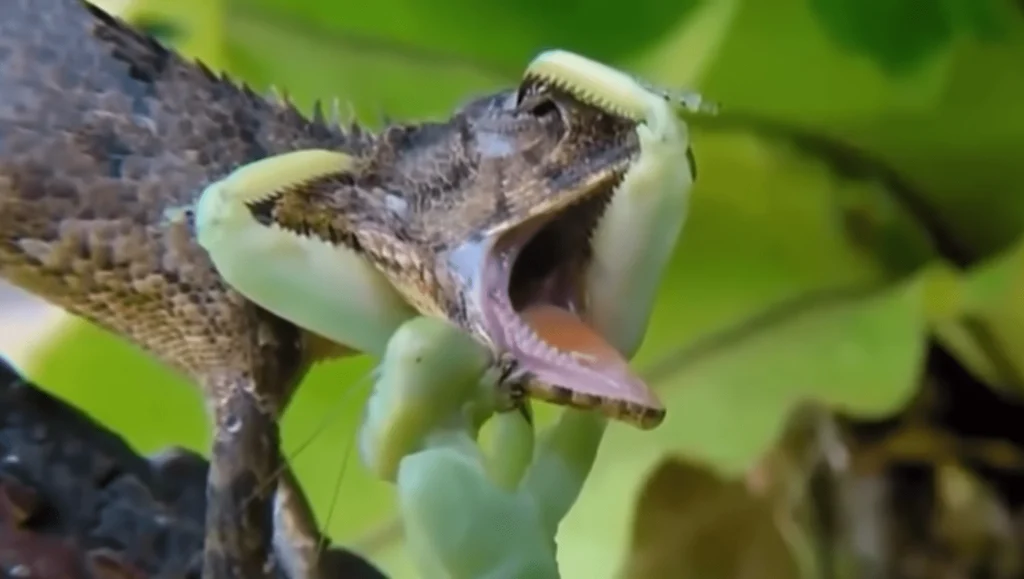In the world of predator-prey dynamics, extraordinary encounters can challenge our understanding of nature’s intricacies. Recently, a captivating and rare event has taken center stage – a praying mantis eating lizard. The sight of this diminutive insect devouring a vertebrate has ignited curiosity and sparked debates among scientists and nature enthusiasts alike. In this article, we embark on a detailed exploration of this unusual relationship, delving into the factors behind such encounters and shedding light on the fascinating world of praying mantis predatory behaviors.

Praying Mantis: Predator of Insects and Beyond
Praying mantises, those elusive hunters known for their swift and stealthy ways, have long been admired for their ability to prey on a wide variety of insects and spiders. Their raptorial legs, coupled with exceptional eyesight, make them formidable predators in the invertebrate realm. However, the idea of mantises targeting vertebrate prey, particularly lizards, has been a subject of intrigue, raising questions about their dietary flexibility.
Praying Mantises and Their Dietary Flexibility
While mantises are primarily insectivorous (that makes them beneficial in garden), instances of them consuming small vertebrates are indeed documented, though rarely. The reasons behind such rare encounters remain a subject of speculation. Some researchers propose that opportunistic feeding may come into play when scarce prey resources push mantises to diversify their diets. Others suggest that specific ecological conditions might drive these occasional deviations from their typical diet.
Size Matters: Overcoming the Odds
In the world of nature’s predator-prey dynamics, size often plays a pivotal role in determining the outcome of confrontations. When it comes to the prospect of a praying mantis taking on a small lizard, the sheer size disparity seems daunting at first glance. Praying mantises are typically small, delicate insects, with some species ranging from a few centimeters to a few inches in length. On the other hand, lizards can vary greatly in size, with some species measuring several times larger than the mantises themselves.
At first consideration, one might dismiss the idea of a praying mantis successfully overpowering a lizard as mere fantasy. After all, how could an insect so diminutive hope to subdue a creature seemingly much more robust and equipped for defense? However, a closer examination of the praying mantis’s predatory prowess reveals a fascinating array of adaptations that enable them to overcome these formidable odds.
Behavioral Adaptations: The Praying Mantis Advantage
Despite the odds, praying mantises possess an array of behavioral adaptations that may give them a fighting chance against small lizards. Their stealthy approach and lightning-fast strikes are hallmark characteristics that have contributed to their reputation as expert predators.
The Ecological Implications: A Rare Niche
Instances of praying mantis eating lizards, while exceptional, hold significance in the ecological context. Such encounters offer valuable insights into the complexity of predator-prey relationships and the delicate balance that sustains ecosystems. We examine the implications of these interactions for both the mantises and the lizards, as well as their roles in shaping their respective habitats.
Conclusion
The sight of a praying mantis eating a lizard leaves us in awe of the remarkable complexity and adaptability of nature’s creatures. Though uncommon, these unique encounters remind us of the endless surprises that nature has in store. As we continue to observe and study these captivating interactions, we gain a deeper appreciation for the ingenuity displayed by the world’s predators, and the interconnectedness that weaves life’s diverse tapestry. Each new revelation adds a brushstroke to the intricate canvas of predator and prey relationships, inviting us to further explore the wonders of the natural world.